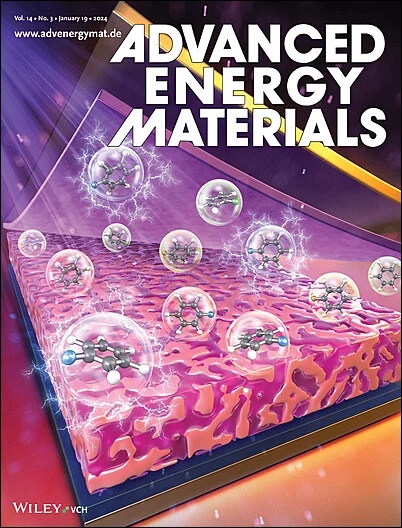Advance in Novel Device Design and Microenvironment Modulation for Bismuth‐Based CO2‐to‐ Formic Acid Electrocatalysis
IF 26
1区 材料科学
Q1 CHEMISTRY, PHYSICAL
引用次数: 0
Abstract
The electrochemical CO铋基CO2 - to -甲酸电催化新装置设计及微环境调制研究进展
可再生能源驱动的电化学CO2还原反应(CO2RR)生成甲酸(FA)是实现碳中和的关键途径之一。铋基材料因其高活性、优异的选择性和相对丰度而成为各种CO2还原催化剂的主要候选材料。尽管有这些优势,但它们的实际应用受到几个关键挑战的阻碍,包括显著的二氧化碳交叉损失、碳酸盐沉淀使活性位点失活,以及低纯度FA的生产,这需要资源密集型的分离过程。本文综述了Bi催化CO2RR生成FA的优点、优势和挑战。然后,系统地探索了克服Bi催化CO2RR体系障碍的创新策略,重点关注了电解质调制和器件设计方面的进展。这些关键方法包括:1)采用酸性电解质,2)固态电解质(sse)的实施,以及3)双极膜(BPM)的集成,从而提高Bi基CO2RR的FA效率和器件耐用性。最后,我们对这些技术的未来机遇进行了简要展望,以加速CO2RR到FA的产业化。
本文章由计算机程序翻译,如有差异,请以英文原文为准。
求助全文
约1分钟内获得全文
求助全文
来源期刊

Advanced Energy Materials
CHEMISTRY, PHYSICAL-ENERGY & FUELS
CiteScore
41.90
自引率
4.00%
发文量
889
审稿时长
1.4 months
期刊介绍:
Established in 2011, Advanced Energy Materials is an international, interdisciplinary, English-language journal that focuses on materials used in energy harvesting, conversion, and storage. It is regarded as a top-quality journal alongside Advanced Materials, Advanced Functional Materials, and Small.
With a 2022 Impact Factor of 27.8, Advanced Energy Materials is considered a prime source for the best energy-related research. The journal covers a wide range of topics in energy-related research, including organic and inorganic photovoltaics, batteries and supercapacitors, fuel cells, hydrogen generation and storage, thermoelectrics, water splitting and photocatalysis, solar fuels and thermosolar power, magnetocalorics, and piezoelectronics.
The readership of Advanced Energy Materials includes materials scientists, chemists, physicists, and engineers in both academia and industry. The journal is indexed in various databases and collections, such as Advanced Technologies & Aerospace Database, FIZ Karlsruhe, INSPEC (IET), Science Citation Index Expanded, Technology Collection, and Web of Science, among others.
 求助内容:
求助内容: 应助结果提醒方式:
应助结果提醒方式:


